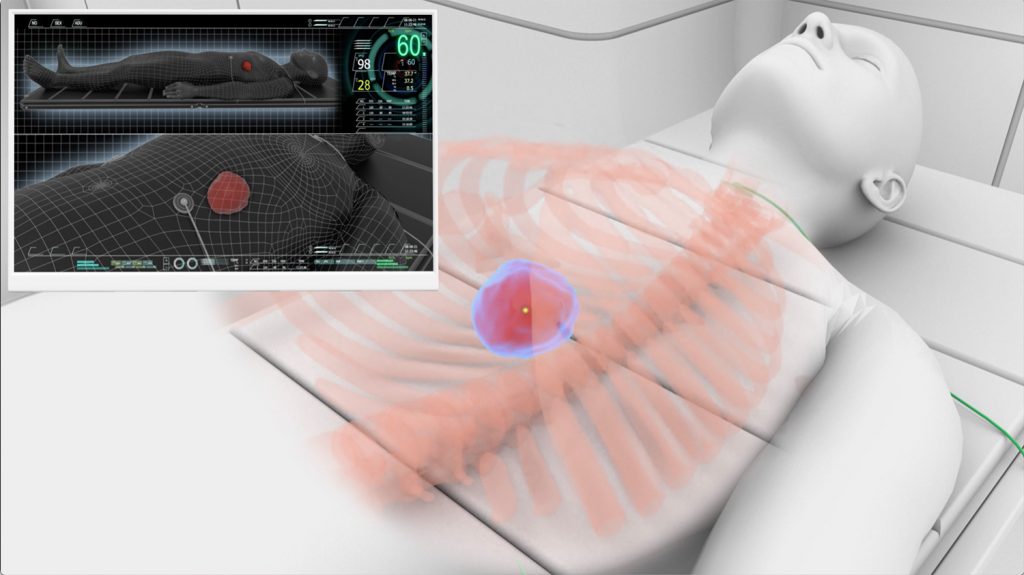
Tumour movement – Shift in volume, position and shape, during and in-between therapy sessions.
Radiation today
Radiation is still emitted into a black box - resulting in severe side effects
Whereas the possibilities for performing high-precision radiation therapy have improved, radiation therapists are still left with a black box problem.
Current imaging techniques are not sufficiently refined to provide information on the exact positioning, shape, and volume of a tumour during delivery of radiation to treat the cancer. This is due to the anatomical changes of the tumour in-between treatment sessions, as well as the patient’s breathing and other body movements during a treatment session. Consequently, radiation might be erroneously emitted to healthy tissue, and/or will not efficiently be covering the entire volume of the tumour.
Emitting high loads of energy to healthy tissue might cause severe side effects. This can result in nausea, hair loss, incontinence, impotence, hearing loss and the risk of developing other types of cancer. On the other hand, insufficient radiation coverage of the tumour will decrease treatment efficacy.

